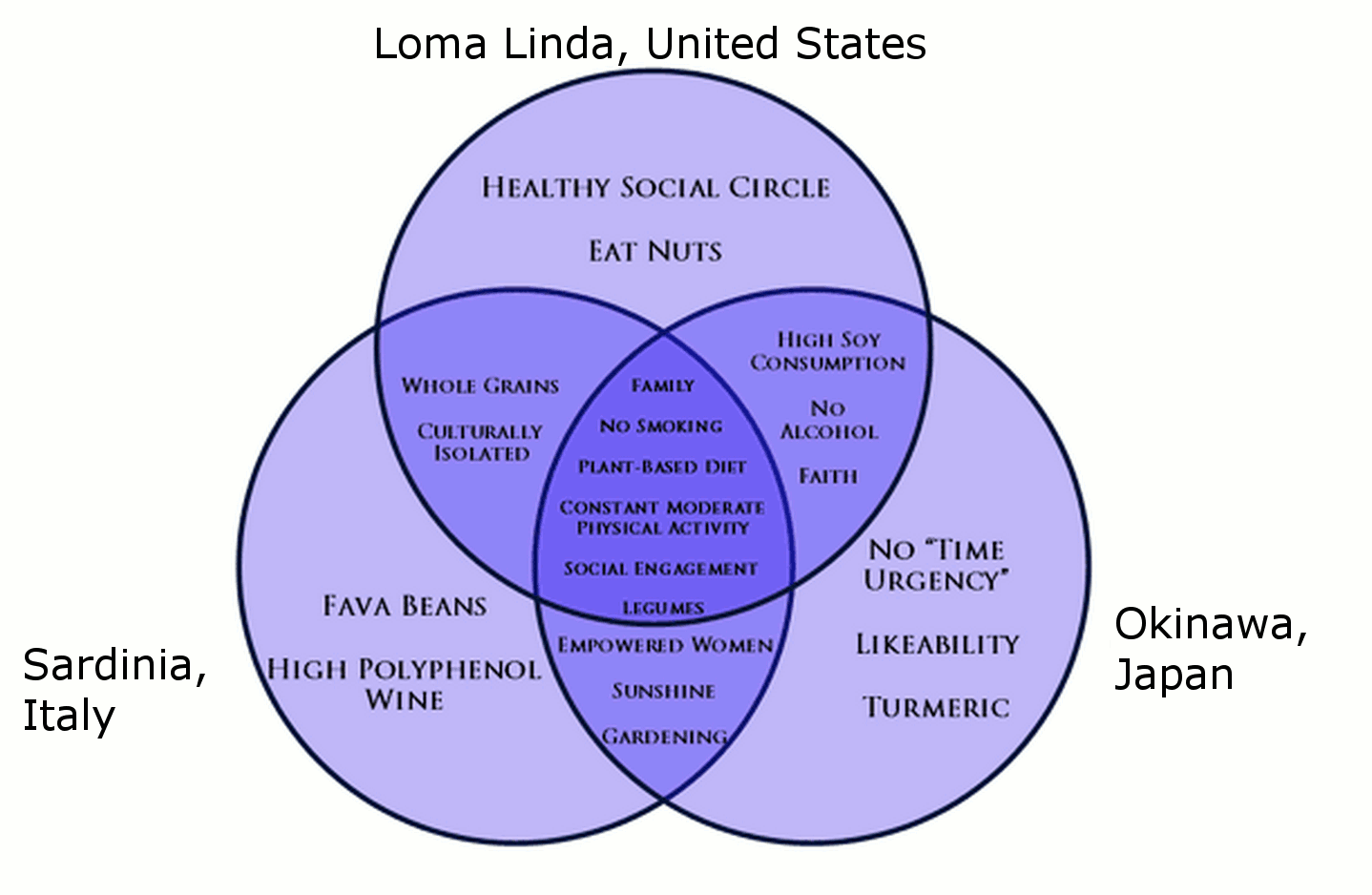These are places where the population lives exceptionally long healthy lives. In 2004, National Geographic put together a team to explore which parts of the world had genuinely long-lived people. Some places turned out to be fake (old people were exaggerating their age). But eventually, through rigorous examination of official birth and death records they established that just five areas had genuinely long-lived people.
These areas were the island of Sardinia in Italy, the island of Icaria in Greece, the island of Okinawa which is at the bottom of the Japanese archipelago, Loma Linda in California, and the north-west part of Costa Rica, including the Nicoya peninsula.
What then followed was an attempt to discover why people in these areas lived so long. Blood and DNA tests were taken, life-styles were examined, the diet was explored in detail. Gradually a picture started to emerge about what made people in these communities so healthy.
Secrets of the Blue Zones
Only two of the zones may possibly have DNA advantages - Sardinia and Costa Rica. However the people in Loma Linda, California were not gentically homogenous, instead they were all Seventh-Day Adventists.
A feature of the Adventist lifestyle is they observe a genuine "day of rest". They literally do no work on the seventh day. The don't use Saturday to catch up on the shopping, cleaning and so on. The fit all that in the rest of the week. On the seventh day they literally rest and enjoy themselves. Have picnics, catch up with friends and family, sleep, lay on the grass watching the clouds. No work, no rushing around, no checking emails or going online.
It turned out that the people in Okinawa also took it easy - no rushing, lots of time spent with friends and family, a relaxed approach to time. Same story on Icaria in Greece, the island lifestyle was protecting them.
The other thing all the zones had in common was moderate exercize. The Sardinians, Costa Ricans and Okinawans walked every day - nothing that would stress joints or provide muscle strain. Just gentle movement. And gardening.
The other thing was, none of them overate. They tended to shun processed food and ate what they grew in their gardens. Blue zone people seem to eat everything, but always in moderation. None were fat. The following venn-diagram shows what some of the zones have in common:
Conclusion
Most people know that the Mediterrean Diet is healthy, with it's fruit, nuts, red wine and olive oil, and that accounts for the health of the Sardinians and the Icarians in Greece. But Loma Linda and Okinawa also prove that getting rest is incredibly important, and that it is more important to rest on a weekly basis than it is to rush around like mad all year and think you can fix things in a two-week holiday.
When you think about the modern lifestyle and how it keeps you chained to technology, so you have to answer the phone, check your email outside work hours, or get sucked into angry debates online, or have yourself whipped up by click-baity articles designed to raise your blood pressure, it is no wonder that people are ill.
So far, I have been trying to get a varied diet and do moderate exercize, but still haven't been able to make myself step away from the keyboard and phone for a whole day. Am going to attempt it this weekend - a day simply reading a book or chatting with family and no internet, no work, no checking the news, no television. Not sure if I can do it, I think I am addicted to being "connected", but am also conscious that it is not doing me any good, so it's worth making the effort to let the world go for a day.
If you want to find out more about the Blue Zones, the following articles should point you in the right direction:
 )
)